I don’t think any of us had the audacity to predict it would grow as big or as fast as it has.Andy Jassy,
Amazon Web Services(AWS) CEO
Jassy’s predictions may not have been on point. Still, his idea certainly was, which eventually translated into Amazon Web Services, the best-in-market Infrastructure as a Service (IaaS) company that has spread across 190 countries since its launch.
Businesses no longer have to plan for IT infrastructure such as servers in advance. They can access thousands of servers virtually within minutes by leveraging the power of cloud computing. And while AWS is the top choice for businesses, here’s why and how it works.
AWS is a comprehensive cloud computing platform that offers a wide range of services, including computing, storage, and big data solutions. With computing storage options ranging from simple file storage to high-performance computing instances, AWS has the tools you need to build, test, and deploy applications at any scale. The platform’s big data services make it easy to process and analyze large datasets, providing valuable insights and enabling data-driven decision-making.
AWS eliminates up-front capital infrastructure costs that, in turn, help scale up a business. It is a smooth sailing product-market fit that hundreds of thousands of businesses rely on. In fact, AWS has outcompeted the Google Cloud platform too — Amazon dominates the cloud application development market, with its public cloud market share accounting for 41%.
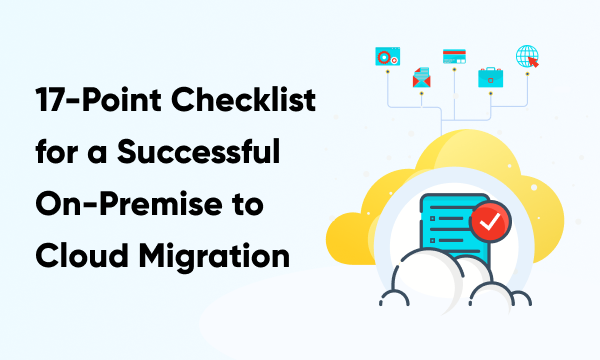
We respect your privacy. Your information is safe.
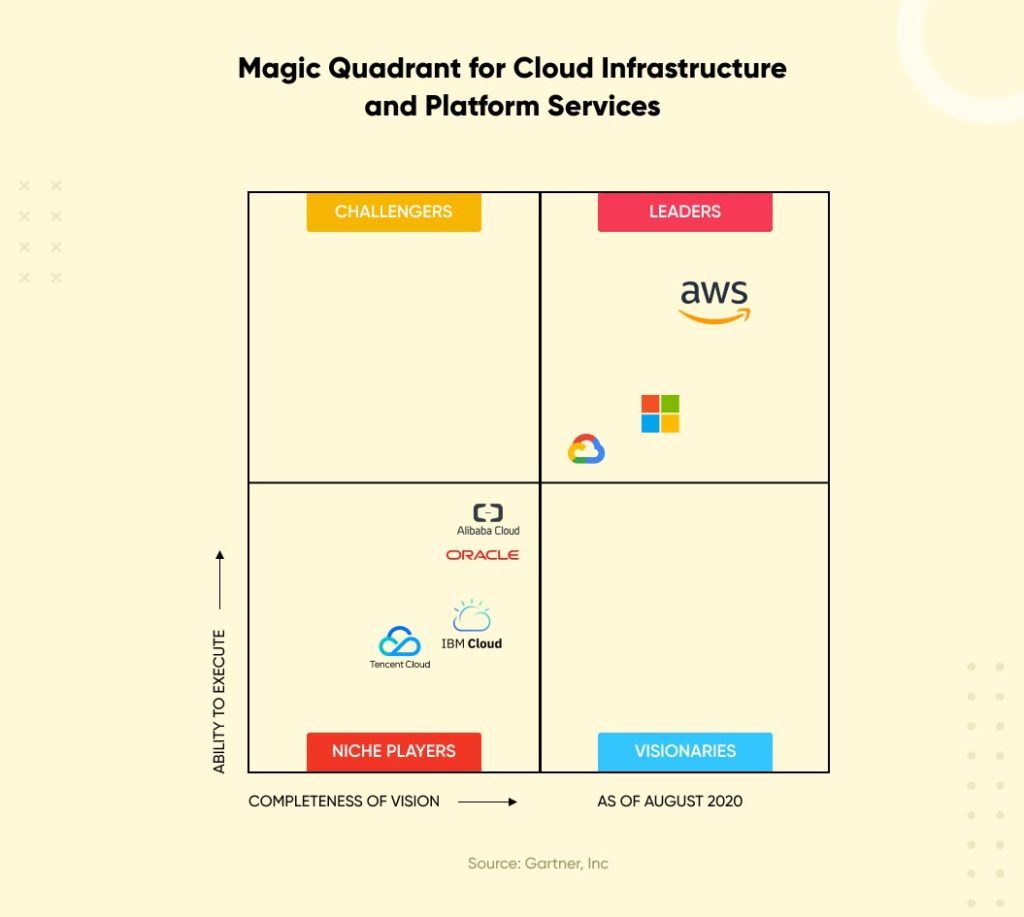
What is Amazon Web Services?
Given its immense popularity globally, Amazon Web Services (AWS) doesn’t need any formal introduction. Amazon web service is an online platform providing scalable and cost-effective cloud computing solutions.
It offers several on-demand operations like compute power, content delivery, database storage, etc., to help corporations scale and grow.
Amazon Web Services (AWS) is the world’s most adopted cloud platform. It is working on a pay-as-you-go model, dominating the public cloud market with a 39% share, spreading across 190 countries and 170 AWS services all across any time serving millions of customers like GE, Samsung, Coca-Cola, Slack, and Netflix. And offering benefits like reduced costs, more agility, and faster innovation. In addition to these core capabilities, AWS also offers a variety of other platform offerings, such as managed databases and machine learning tools, to help you build and deploy powerful applications quickly and easily.
Why Should You Consider Amazon Web Services?
For the ninth year in a row, AWS is positioned at the top in the Gartner’s Magic Quadrant for Cloud Infrastructure as a Service (IaaS) across both the axes of measurement: Ability to Execute and Completeness of Vision.
Many firms, small or big, trust AWS because of the features it provides. AWS helps companies with various workloads such as game development, data processing, warehousing, achievement, growth, and many more. AWS provides a feature that allows you to choose servers according to your choice. One of the key features of AWS is its robust suite of big data services. These tools make processing and analyzing large datasets easy, providing valuable insights and enabling data-driven decision-making. With the ability to scale up or down as needed, AWS’s big data services are a cost-effective solution for businesses of all sizes. Whether you’re working with structured or unstructured data, AWS has the tools you need to extract insights, build data pipelines, and integrate with other services and applications.
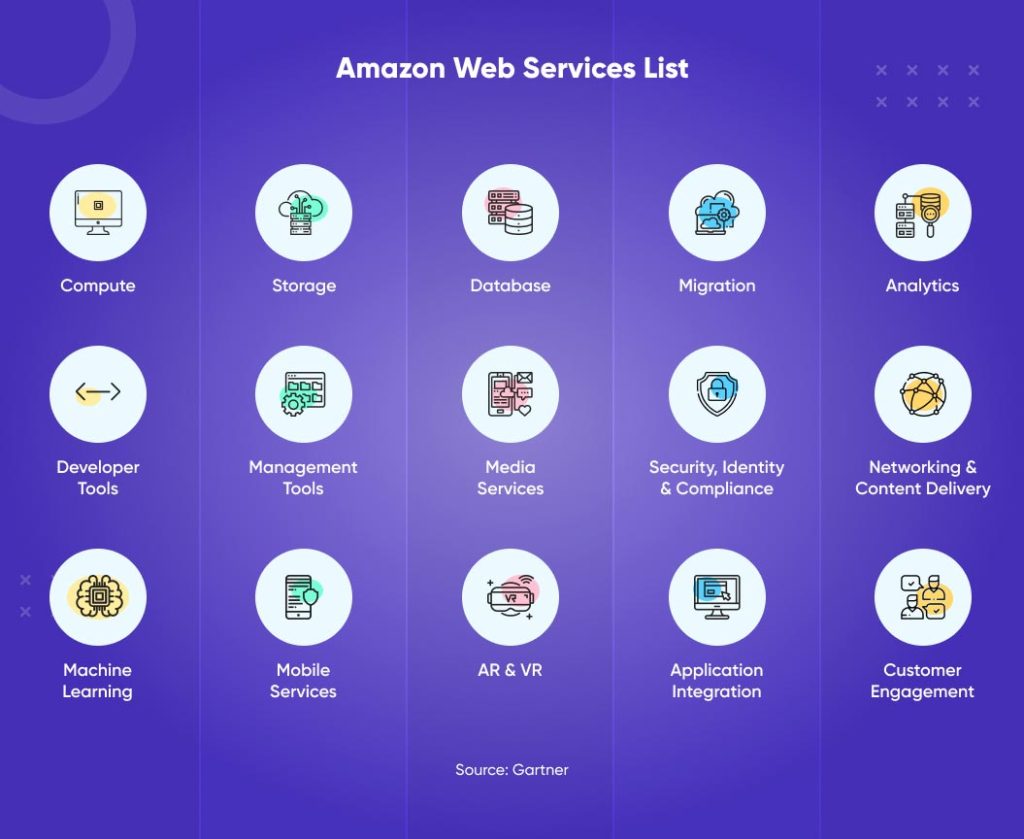
Let’s read some of the most important services offered by Amazon web services used worldwide.
Compute
- Amazon EC2(Elastic Compute Cloud): With OS-level control, EC2 is a virtual machine in the cloud. It provides the liberty of running this cloud server whenever the user wants.
- AWS Lambda: It renders the liberty of running the codes in the cloud without managing servers. It’s a lot more cost-efficient as you pay only when your functions execute. With AWS Lambda, you can run code for any application with zero administration.
- AWS Elastic Beanstalk: The tool offers automated deployment and resource provision like a highly scalable production website.
AWS Elastic Beanstalk is a Platform as a Service that facilitates quick deployment of your applications by providing all the application services that you need for your application.
Networking
- Amazon VPC: Amazon VPC is the network environment in the cloud. It enables creating a private network within the AWS cloud that utilizes most of the same concepts and constructs as an on-premises network. Amazon VPS gives the user complete control of the network configuration.
- Amazon Route 53: Amazon Route 53 is a highly scalable and available cloud Domain Name System (DNS) website. The design is specific for the developers & businesses, offering reliable and cost-efficient ways to route end users to Internet applications.
Migration
Migration services are used to transfer data physically between your data center and AWS.
- DMS (Database Migration Service): DMS services are utilized for migrating on-site databases to AWS. It assists the users in relocating or migrating from one type of database to another — for example, Oracle to MySQL.
- SMS (Server Migration Service): SMS migration services enable the user to migrate on-site servers to AWS quickly.
- Snowball: Snowball is a small application that allows you to transfer terabytes of data inside and outside the AWS environment.
Database Services
- Amazon RDS: This Database AWS service can easily set up and help developers operate and scale a relational database in the cloud more straightforwardly.
- Amazon DynamoDB: Amazon Dynamo is a fast and flexible, fully managed NoSQL database service that allows reliable and efficient performance without any scalability issues. It is a simple service that helps cost-effective storage, durable database, backup, and restore features.
Storage
- Amazon S3 (Simple Storage Service): Amazon Simple Storage Service (Amazon S3) is object storage designed to provide infinite storage with a simple web service interface. Amazon S3 is used as primary storage for cloud-native applications to target backup and recovery and disaster recovery.
- Amazon Glacier: An extremely low-cost storage service. Amazon Glacier is a secure, low-cost, fast storage for data archiving and long-term backup. Since the data stored in it takes certain hours to retrieve, making it ideal for achieving.
Benefits of AWS
Amazon continues to lead the worldwide IaaS market with an estimated $26.2 billion of revenue in 2020 and a market share of 41%. Gartner
Here’s what makes Amazon AWS a world leader in the cloud market and why you should add AWS to your cloud strategy.
1. Enhanced Security
Amazon Web Services make for a durable and secure technology platform. To ensure the safety and integrity of your data, Amazon’s data centers and services have several layers of physical and operational security. AWS also conducts regular audits to ensure its infrastructural security.
It has also implemented best practices in security along with offering documentation on how to deploy the security AWS features. It ensures the availability, integrity, and confidentiality of your data and provides end-to-end privacy and security.
Amazon AWS is quite serious about the cloud security they provide. Their latest addition to security services is the Amazon Detective that makes data investigations faster and more efficient.
2. Cost-Effectiveness
One of the most promising Amazon Web Services advantages includes its pay-as-you-go pricing model. This implies that you pay only for the specific service that you subscribe to and only for the time you need it for. This is a step forward towards an agile-driven product development organization.
AWS pricing is similar to how you pay for utilities like water and electricity. You only pay for the services you consume, and once you stop using them, there are no additional costs or termination fees.
There are other plans as well that hold valid for specific AWS services. Here’s an overview to help you understand which Amazon cloud computing cost plan will be the best fit for your organization.
- Save When you Reserve: This offer holds valid for specific services such as Amazon EC2 and Amazon RDS. Here the upfront cost is directly proportional to the discount accrued, i.e., if you decide the pay the entire cost up-front, you’ll receive the maximum discount and vice-versa.
- Pay Less by Using More: For specific AWS services such as S3 or data transfer OUT from EC2, the more the usage, the less you pay per Gigabyte (GB). These are volume-based discounts that help benefit in the long run.
- AWS Free Tier: When a new account is created, access to over 60 AWS services is offered for free. However, these free offers are further subdivided into three offers depending on the type of product a business decides to use.
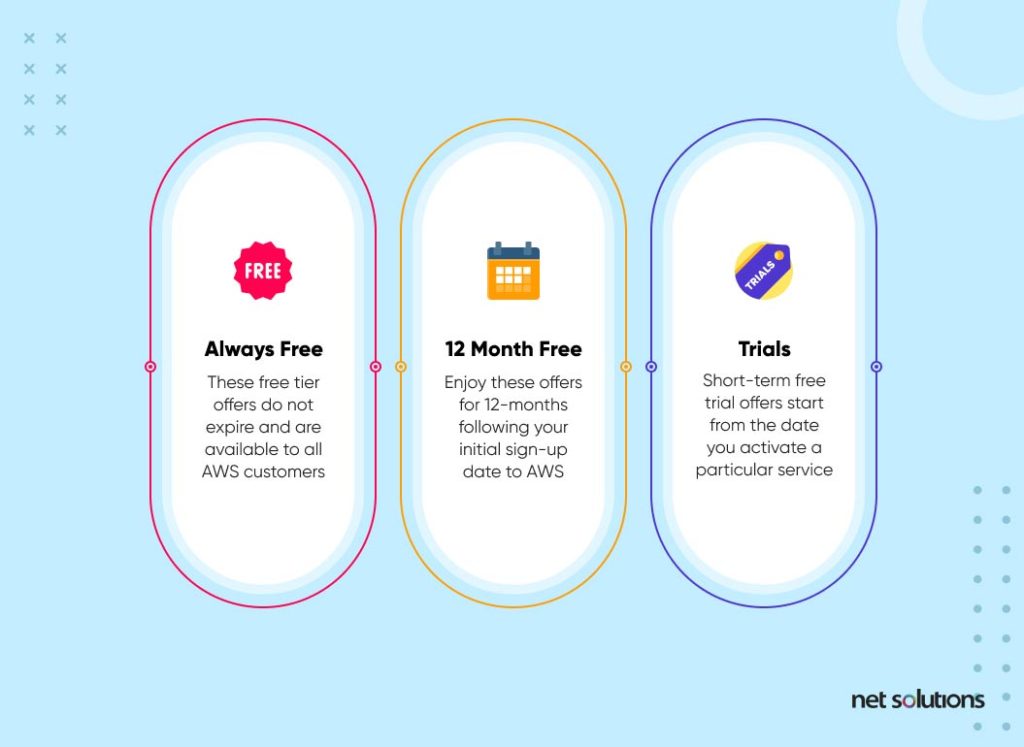
3. Flexibility and Openness
Amazon web services are platform-agnostic to operating systems and languages. You can select the programming model or development platform that can be most beneficial for your business.
Businesses receive a virtual environment that lets them access software and services that the specific application requires. Thus, no restrictions or rigid protocols when subscribing to Amazon cloud services that not only help ease cloud migration but also help build new solutions.
Also, you can use the programming languages, architectures, operating systems and databases you are familiar with. In this manner, there won’t be any need for your IT personnel to pick up new skills, and the overall time to market and productivity will significantly improve.
4. Elasticity and Scalability
AWS cloud lets you iterate, experiment, and innovate quickly through its huge global cloud infrastructure. To leverage scalability, AWS can easily manage the workload increase by allocating the resources based on the demand, that too within minutes. You can also use new apps rather than wait for months for hardware and avoid resource provisioning upfront for projects with short lifetimes and variable consumption rates.
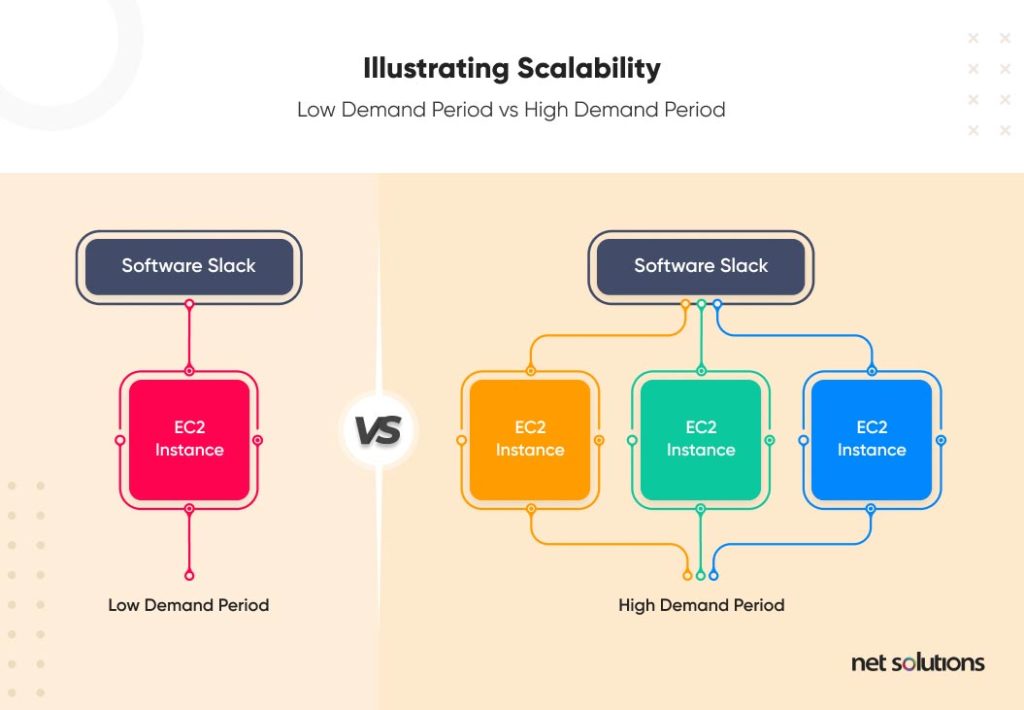
You can use Amazon Web Services to allot resources through API calls, in place of buying hardware, setting it up, and maintaining it to allot resources to apps.
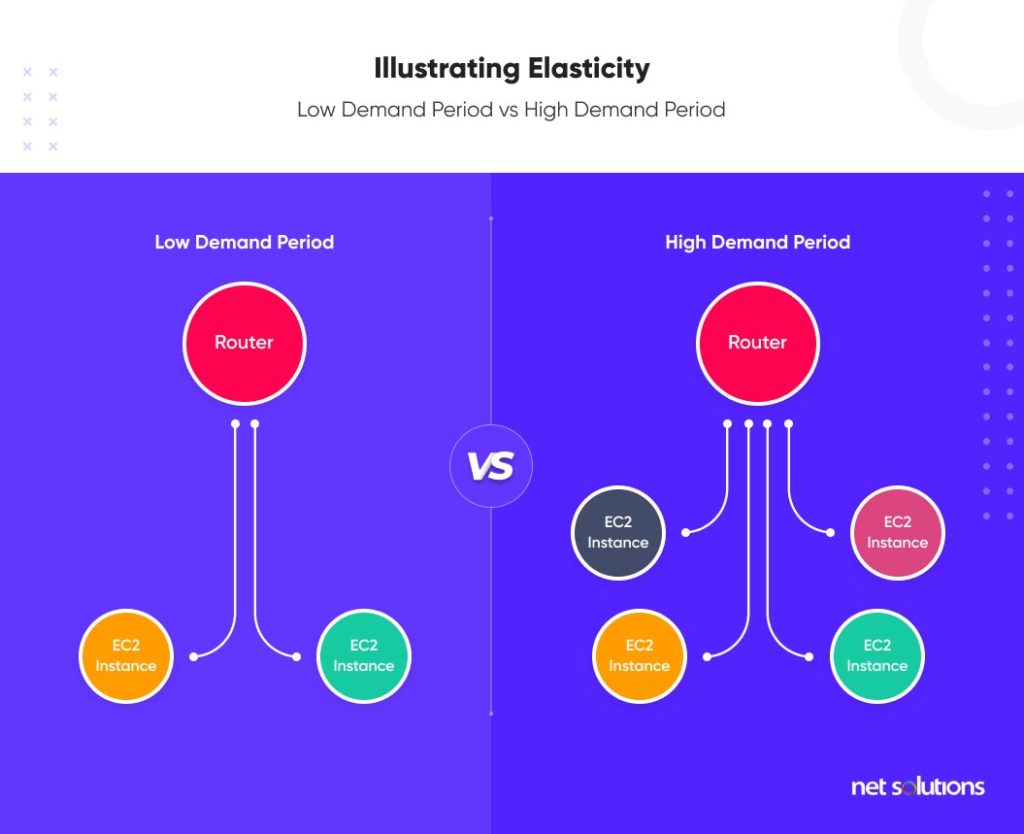
Thus, auto-scaling and elastic load balancing can scale up Amazon cloud-based resources automatically in case of an unforeseen increase in demand and also scale them down if the demand is reduced. The AWS cloud also proves useful for jobs recurring at regular intervals, jobs that are mission-critical, and jobs in the short term.
Applications of AWS Services
Amazon Web services are extensively used for various computing purposes like:
- Application Hosting/SaaS Hosting
- Sharing Media (Image/ Video)
- Hosting Website
- Content Delivery and Media Distribution
- Social Networking
- Storage, Backup, and Disaster Recovery
- Development & Testing Environments
- Social Networking
- Academic Computing
- Search Engines
- Mobile and Social Applications
Useful AWS Applications
Analytics
Measuring metrics to track your website’s performance in real-time provides valuable insights. AWS offers real-time web analytics with a Kinesis Data Analytics solution that allows users to track their website activities easily. It will enable the user to see who’s visiting the website? From where are you getting the visits? And what are they doing on your website?
It provides a framework to analyze and visualize the metrics to add more metrics instead of managing the underlying infrastructure.
Artificial Intelligence (AI)
AWS offers an elaborate and comprehensive set of AI services and machine learning for your business.
The platform provides a particular focus on the developers who lack knowledge and expertise regarding machine learning. One can select pre-trained AI services regarding language, recommendations, computer vision, and forecasting.
Blockchain
Amazon’s AWS is counted among the most effortless infrastructure that contributes to developing a scalable blockchain network.
Blockchain technology is mainly used to resolve two types of customer needs. To start with, multiple parties manage with a centralized, advanced authority. It allows in maintaining a complete and valid record of transactions. Secondly, numerous parties transact in a decentralized manner without the need for a centralized, trusted authority.
Internet of Things (IoT)
AWS IoT comes in function and provides the developers with a more comprehensive and smooth, fully managed functionality.
It allows the user to build IoT solutions for several devices and turn them into smarter ones that don’t need an internet connection.
AWS’s IoT services allow scaling the business with the most extensive security features, which also helps in deploying preventative security measures and responding to security issues promptly.

Brief Comparison of AWS, Microsoft Azure, and Google Cloud Platform
| AWS |
Dominant market position Extensive, mature offerings and training Support for large organizations Global reach |
Difficult to use Cost management Overwhelming options |
| Microsoft Azure |
Second in market share Integration with Microsoft tools and software Broad feature set Hybrid cloud |
Issues with documentation Incomplete management tooling |
| Google Cloud Platform |
Designed for cloud-native businesses Commitment to open source and portability Deep discounts and flexible contracts DevOps expertise |
Late entrant to IaaS market Fewer features and services Historically not as enterprise-focused |
What is AWS EC2 and Why Businesses are Opting for it?
Amazon Elastic Compute Cloud (Amazon EC2) provides scalable computing capacity in the Amazon Web Services (AWS) cloud. Using Amazon EC2 eliminates your need to invest in hardware up front, so you can develop and deploy applications faster.
Introduced in 2006, Elastic Compute Cloud (EC2) lets you use Amazon’s environment for computing and control your computing resources completely. You can rapidly scale capacity based on your computing needs as Amazon EC2 allows you to get and boot new server instances in a few minutes.
It also protects against common scenarios of failure and provides developers with tools to develop mobile applications that are failure resilient. A perfect example can be GE Appliances, which has constantly been growing with the help of these EC2 instances.
Prominent Features of Amazon Web Services EC2?
AWS EC2 has various features that help develop enterprise-class and scalable apps, which are resilient to failure. Some of them are listed below.
1. Amazon Elastic Block Store (EBS)
EBS provides persistent storage for instances of Amazon EC2. Amazon EBS volumes are attached to the network and persist without being dependent on an instance’s life. These can be attached as a standard block device to a running Amazon EC2 instance or used as the boot partition of an Amazon EC2 instance and are highly reliable.
You can stop and restart Amazon Web Services EC2 instances as required when you use Amazon EC2 as a boot partition. In a single availability zone, Amazon EBS volumes are replicated automatically.
If you need greater durability, you can create point-in-time consistent snapshots of your volumes (stored in Amazon S3), which are replicated automatically for various availability zones, through Amazon EBS.
You can also save your data for durability by using the snapshots as starting points for new Amazon EBS volumes. These snapshots can be easily shared with other AWS developers and co-workers.
2. EBS-Optimized Instances
You can launch a few chosen Amazon EC2 instance types as EBS-optimized instances for a low hourly fee. EBS-optimized instances make it possible for EC2 instances to utilize the IOPS provisioned on an EBS volume completely. Depending on the kind of instance used, throughput anywhere between 425 Mbps and 14,000 Mbps can be delivered by EBS-optimized instances between Amazon EC2 and Amazon EBS.
Contention between Amazon EBS I/O and other traffic from your EC2 instance is minimized via dedicated throughput, and this provides the best performance for your EBS volumes. EBS-optimized can be used with both provisioned and standard IOPS Amazon EBS volumes.
Provisioned IOPS volumes can deliver within 10% of the provisioned IOPS performance 99.9% of the time and can achieve single-digit millisecond latencies when attached to EBS-optimized instances.
3. Elastic IP Addresses
Static IP addresses that can be used for dynamic cloud computing are known as elastic IP addresses. An elastic IP address is not associated with a particular instance but with your account and, until you release it, you can control that address.
By remapping your public IP addresses programmatically to any instance in your account, elastic IP addresses let you mask availability zone failures or instances.
Amazon EC2 lets you work around issues with software or instance by rapidly remapping your elastic IP address to a replacement instance. So you don’t have to wait for DNS to propagate to all customers or wait for a data technician to replace or reconfigure your host.
4. Amazon Virtual Private Cloud
You can define a virtual network where you can launch AWS cloud resources. This can be done through a section of the AWS cloud logically isolated with the help of Amazon VPC. You can configure network gateways and route tables, create subnets and choose your own IP address range. That’s because you can control your virtual networking environment completely through Amazon VPC.
You can also create a hardware virtual private network (VPN) connection between your VPC and your corporate data center to use AWS cloud as an extension of your corporate data center.
5. Amazon CloudWatch
Starting with Amazon EC2, Amazon CloudWatch monitors Amazon cloud applications and resources. Network traffic, disk reads and writes, and CPU utilization is among the metrics that Amazon CloudWatch provides you for visibility into overall demand patterns, operational performance, and resource utilization.
You can set alarms, view graphs, and get statistics for your metric data. You simply have to choose the Amazon EC2 instances you want to be monitored, to use Amazon CloudWatch. You can also provide your own application or business metric data. Amazon CloudWatch will collect and store monitoring data that can be accessed using command line tools or Amazon web service APIs.
Here’s an example of how Amazon CloudWatch is providing insights on the application’s health for .Net and SQL servers.
6. Auto Scaling
In accordance with the conditions you outline, auto-scaling lets you scale your Amazon EC2 capacity up or down. You can minimize costs during spikes or lulls in demand through auto-scaling that automatically scales up or scales down the Amazon EC2 instances you are using.
For apps that undergo weekly, daily or hourly usage variability, auto-scaling is highly suitable. Amazon CloudWatch enables auto-scaling and lets you only pay only for what you.
7. Elastic Load Balancing
This automatically allocates incoming application traffic to various Amazon EC2 instances. Responding to incoming app traffic, elastic load balancing provides the load balancing capacity required to help you get greater tolerance for faults in your apps.
Elastic load balancing sends traffic to healthy instances until the unhealthy instances have been repaired. For the consistent performance of mobile apps, elastic load balancing can be enabled within one or more availability zones.
Request latency and request count are the operational metrics that can be captured using Amazon CloudWatch. Moreover, you don’t have to pay anything other than the fees for elastic load balancing.
Airbnb is using Elastic Load Balancing, which automatically distributes incoming traffic between multiple Amazon EC2 instances.
8. Auto Recovery
Auto recovery is an Amazon CloudFront EC2 feature that automatically recovers all the supported instances if case system damage is identified. It is an easy task to enable the auto recovery feature by creating an AWS CloudWatch alarm. An added perk of this feature is that it narrows down its ability to keep an instance running while the instance gets recovered on the new hardware. Thus, there is no need for instance migration.
9. Enhanced Networking
This EC2 feature enhances the packet per second performance, along with providing lower network jitter and lower latencies. Enhanced networking utilizes a new network virtualization stack that holds power to offer better I/O performance and low CPU utilization. All you need to do is launch an HVM AMI in VPC, and install a compatible driver.
10. VM Import/Export
This EC2 feature facilitates the import of virtual machine images from the source to EC2 instances and export to the same source at any given time. You also get to export any previously imported EC2 instances to its source whenever the need be. However, there is a standard usage threshold beyond which there are additional charges to use the service.
11. High-Performance Computing (HPC) Clusters
Businesses that are dealing with computational workloads such as applications sensitive to network performance can manage to achieve the required high performance with the help of this Amazon Web Services EC2 feature. C5 instances are specifically built to perform network-intensive operations and can be divided into clusters, thereby offering low-latency network performance that is further needed for tightly coupled, node-to-node communication.
12. Optimized CPU Configurations
You can benefit from cost advantages, flexibility, and elasticity of Amazon EC2, and also achieve the kind of high network and computing performance that is achieved through custom-built infrastructure even with complex computational workloads like apps sensitive to network performance and tightly coupled parallel processes.
Apps can get low-latency network performance needed for node-to-node, tightly coupled communication by programmatically launching high memory, cluster GPU, and cluster compute instances into clusters.
High memory, cluster GPU and cluster compute instances have been designed to provide high-performance network capability. Cluster instances are suitable for customer applications that are required to perform network-intensive operations and provide considerably increased throughput.
What Benefits Does Amazon EC2 Offer?
After maneuvering through the plethora of features that EC2 provides, here are some add-on benefits to note.
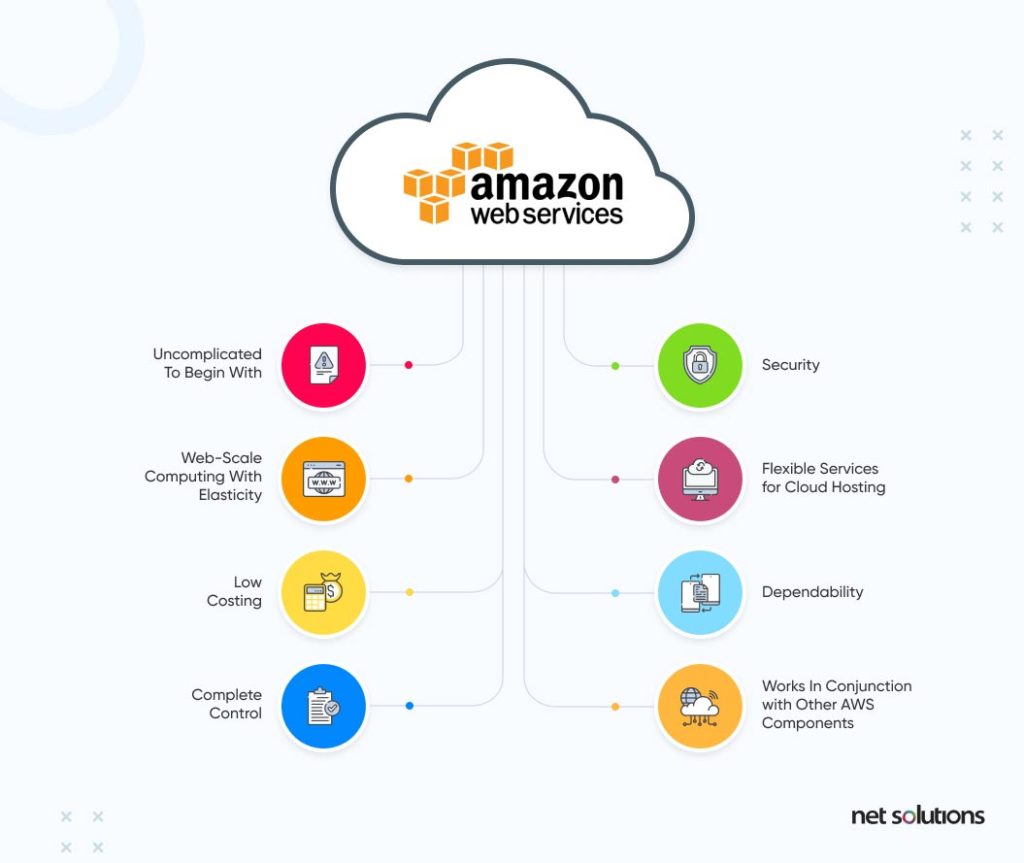
1. Uncomplicated To Begin With
Getting started with EC2 is simple and quick. All you need to do is select pre-configured software on Amazon Machine Images (AMIs) by visiting the AWS Marketplace and get started right away with Amazon EC2. Use the EC2 Amazon web services console or through a single click launch to install the software.
2. Web-Scale Computing With Elasticity
Your app can automatically scale to-and-fro because Amazon EC2 is controlled through web service application programming interfaces (APIs). You can commission any number of server instances at the same time to increase or decrease capacity in a few minutes through Amazon EC2 which, in turn, makes it a profitable AWS service.
3. Low Costing
The monetary benefits of Amazon’s scale are passed on to customers. You pay only for the computing capacity you use and at a rather low rate. While EC2 is free to try, there are also paid instances that you can choose. In any case, you only pay for what you’ve chosen, without any sudden or hidden expenses.
4. Complete Control
You can interact with the instances as you would interact with any machine since you have root access for each of them. So you completely control your Amazon Web Services instances. You can save data on your boot partition when you stop an instance and restart it later using the web service APIs. By rebooting instances remotely through web service APIs, you can also access your instance’s console output.
5. Security
Your computing resources are secured, and the networking functionality made robust by Amazon EC2 working along with Amazon Virtual Private Cloud (Amazon VPC).
You decide the IP range for the VPC within which your compute instances are placed. You specify the instances that remain private and those exposed to the internet.
For even more isolation, you can run your instances on dedicated hardware. These are known as dedicated instances and run on resources provisioned through EC2.
You can use industry-standard encrypted IPsec VPN connections to connect resources in your VPC with your existing IT infrastructure.
You can control network access to and from your instances through network access control lists (ACLs) and security groups.
To leverage VPN connections, private subnets, network ACLs and outbound security group filtering, among other advanced networking features, you can create a VPC and introduce instances into it, if you don’t have a default VPC.
6. Flexible Services for Cloud Hosting
There are various software development packages and operating system instance types that you can select through Amazon EC2. You can choose a boot partition size suitable for the operating system and app you have in addition to instance storage, CPU and memory configuration through AWS EC2.
7. Dependability
Dependability helps in quick and predictable replacement of instances through the flexible environment that AWS EC2 provides. The service leverages Amazon’s data centers and network infrastructure to provide 99.95% availability in all Amazon EC2 regions (in accordance with the Amazon EC2 service level agreement).
8. Works In Conjunction with Other AWS Components
For a variety of apps, Amazon EC2 provides storage, query processing, and computing solutions by working in conjunction with Amazon Simple Queue Service, Amazon Simple Storage Service, Amazon SimpleDB, and Amazon Relational Database Service.
Conclusion
In the current market space where on-demand services are on the rise, Amazon Web Services (AWS) has emerged as a viable solution for businesses looking for reliable, scalable, and inexpensive cloud computing services.
With distinct operations in 22 geographical regions, AWS helps companies manage a range of services including development, game development, data processing, warehousing and many more.
A notable advantage of AWS is that your business gets access to EC2 which in turn provides a virtual cluster of computers through the internet. Thus the job of hardware resources gets imitated by these much-helpful server farms located across the globe.
Whether you are a startup or an established enterprise, AWS is an ideal solution that can offer extensive cost savings, maximum uptime, and continuous support – a great return on investment, indeed.

![Header Image_Web App Development Cost Breakdown [2025 Guide]](https://www.netsolutions.com/wp-content/uploads/2021/07/Header-Image_Web-App-Development-Cost-Breakdown-2025-Guide.webp)



